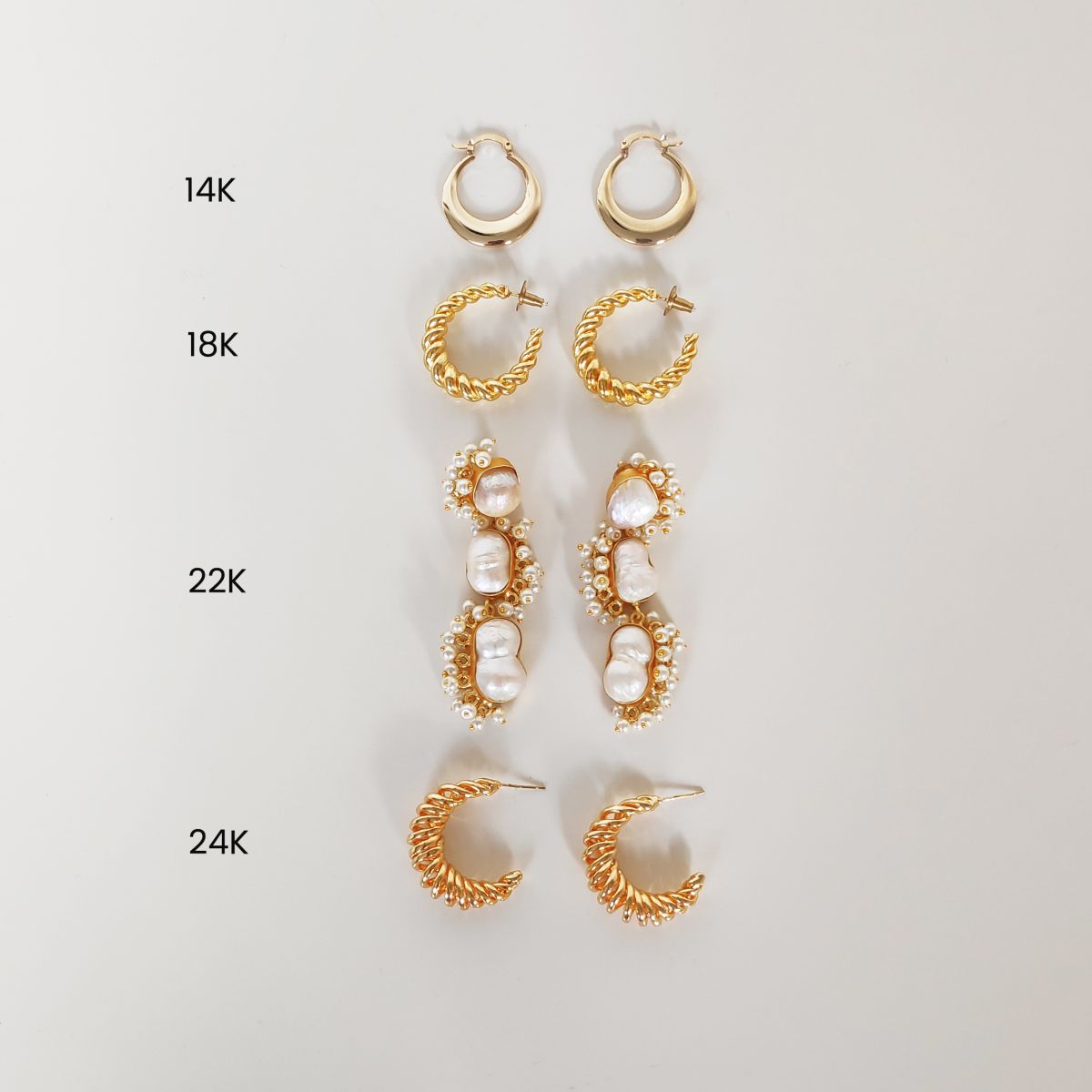Gold Purity Explained
Date Posted:23 October 2020
When shopping for jewellery in shops or online, it is always helpful when you understand common jewellery terms and what they are referring to. A very common question is what is the difference between different karats of gold (gold purity). Before we delve into this question, let’s firstly clarify the difference between carat and karat.
Carat (c or ct) is the globally recognised standard for the weight of a diamond or gemstone. One carat weights 0.20 grams. Carat does not refer to gold or gold purity.
Karat (k or kt) is a measure of gold purity.
24 karat gold (24K gold) is pure gold. By comparison, 12 karat (12K) gold is 50 percent gold and 50 percent base metals or impurities. Same applies to the commonly seen 14K, 18K, 22K and anything in between.
Gold in its purest form — 24K gold is bright yellow with a deeper red or orange tone in colour. When used in jewellery crafting, gold is typically mixed with other metals to create an alloy, which lends the metal both strength and hue. The more metals are mixed with gold, the lower the karat becomes. At Culturesse, we use 18K gold, 22K gold, and 24K gold for our handmade artisan pieces. Below is an image where you can see the gold hue compassion among 14K gold, 18K gold, 22K gold, and 24K gold jewellery in our store:

The difference in gold purity (karat rating) can drastically change the look of your jewellery, even within the same colour. For example (see above image), 14K yellow gold looks very different from 18K yellow gold — less yellow in tone. 18K in comparison to 24K, is ‘yellower’ yet 24K gold has a deeper ‘reddish’ tone for a higher gold components.

